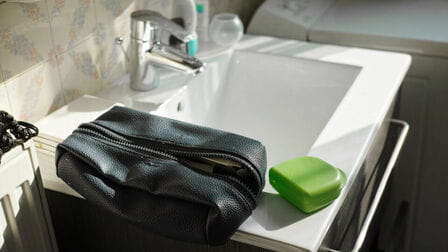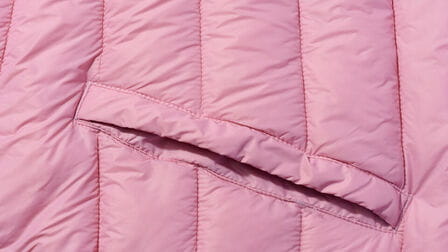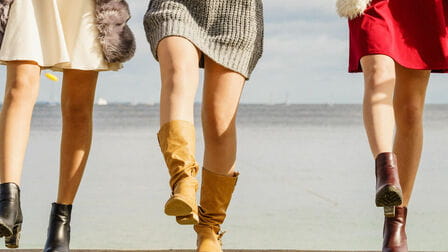Japan is a beautiful country with a rich cultural heritage. As a tourist, you want to fully immerse yourself in the Japanese experience. However, there are some important etiquette guidelines around attire that foreigners should follow to avoid unintended offense. Understanding what not to wear in Japan will ensure your trip goes smoothly.
Revealing and Provocative Outfits
Avoid Skimpy and Revealing Attire
Japanese culture tends to be more modest and conservative when it comes to appropriate attire. Form-fitting, low-cut, sheer, or very short garments are generally not considered appropriate in most public settings. Cleavage, bra straps, midriffs, and upper thighs should be covered. Mini skirts, crop tops, plunging necklines should be left at home. Opt instead for modest lengths and silhouettes when sightseeing about town.
Also avoid skin-tight leggings unless they are worn under a tunic or dress that hits at mid-thigh length. Leggings in Japan are considered innerwear, so wear an outer layer over them.
Don't Wear Clothing with Sexual Images or Messaging

T-shirts or hats with profane language, sexual images, illegal drug references should be avoided to avoid offense. Choose tops with respectful graphics and text when visiting temples, shrines, restaurants, and other public areas.
Cover Up Tattoos
In Japan, tattoos still carry a largely negative stigma as they are associated with the yakuza, or members of Japanese organized crime syndicates. Those with tattoos may be denied entry at bathhouses, gyms, pools, etc. Cover up tattoos with clothing, bandages or buy tattoo concealing sleeves.
Loud, Flamboyant Fashion
Avoid Obnoxiously Bright Colors & Patterns
Japanese street fashion tends to be more subdued and minimalistic in terms of coloring and accessorizing. Think dark neutrals like black, navy and grey paired with minimal jewelry and handbags. Blending in is valued over standing out.
So leave the neon brights, wild patterns (animal prints, loud florals) and excessive jewelry at home to avoid seeming loud or attention seeking.
Tone Down Make-up & Hair Styles
Similar to clothing, make-up application and hair styles also lean towards a polished yet natural appearance.
So steer clear of bold, theatrical make-up with graphic eyeliner, colored contacts, embellished false lashes or extreme hair colors when sightseeing. These are usually reserved for Harajuku street fashion shoots or costume events.
Religious Symbols & Imagery
Refrain from wearing clothing with religious iconography like crosses and spiritual symbols if you plan on visiting sacred spaces like temples and shrines during your trip. This ensures respect across belief systems.
For example, wearing shirts or jewelry with Buddhas while visiting Shinto temples is considered mixing faiths. Visitors with cross necklaces entering Buddhist spaces may also cause confusion and offense.
Political Statements
To avoid confrontations, don't wear apparel promoting political parties, Making political statements as a foreigner can be seen as disrespectful.
Controversial messages insulting Japan's political leadership should especially be avoided. For example wearing shirts calling out government officials by name or promoting opposing parties while visiting the country.
Refrain from patterns associated with organized crime groups in Japan as well to stay safe. This includes tokutei kōsō shitei bōryokudan logos.
Traditional Japanese Dress
Do Not Wear Religious Garments Without Context
The kimono is a beautiful garment symbolic of Japan's elegant aesthetic tradition. However wearing an actual ceremonial kimono meant for coming of age ceremonies or bridal rituals could be seen as inappropriate if done without care and consideration.
Opt instead for summer yukata robes or light cotton kimonos if you wish to experience wearing traditional dress respectfully as a tourist. Or engage cultural experts like kimono dressers to help you don the intricate ensemble properly.
Avoid Patchwork 'Kimono Style' Cover Ups
Cultural appropriation is unfortunately an issue in tourism if travellers purchase cheap imitation 'kimonos' that blend African prints, Chinese qipaos etc while claiming to represent Japanese identity.
Stick to visiting museums and traditional textile stores to understand the time-intensive artisanal craft behind real kimonos before buying souvenirs.
Shoes Worn Indoors
Always remove footwear like shoes before entering sacred spaces like temples and shrines. There are shoe storage shelves by the entrances where visitors can leave their shoes. Wear clean socks or bring indoor slippers if you wish to avoid walking barefoot in these community areas.
At traditional inns and hotels in Japan, slippers are provided within rooms which must be worn instead of outdoor shoes to avoid dirtying mat floors. Separate toilet slippers are also offered to prevent spread of germs.
Beachwear Beyond the Beach

Loungewear in Public
It is considered poor style to wear pajamas, slippers or bathrobes outside of bedrooms at inns or while running short errands near where you are staying. Change into daywear like jeans, dresses or skirts before sightseeing or eating meals. Loungewear in public signals one has forgotten manners.
Conclusion
Dressing appropriately for the context shows care, humility and cultural sensitivity as a visitor. With some mindful adjustments to items like necklines or shoe protocols, your vacation fashion can seamlessly intermingle with this fascinating East Asian nation.












